
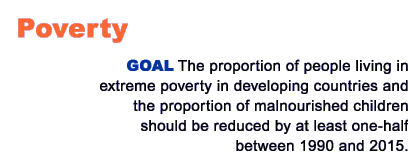

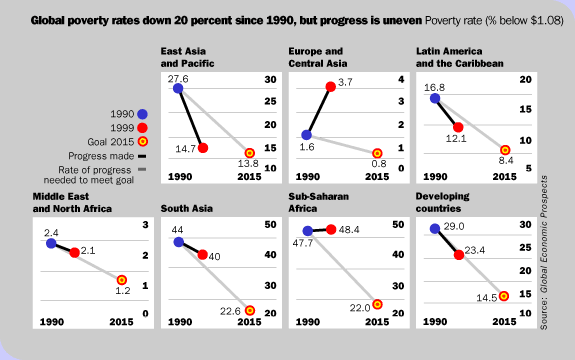
|
Poverty rates have declined in most regions, except for the transition economies of Europe and Central Asia. The greatest number of poor people live in South Asia, but the proportion of poor is highest in Sub-Saharan Africa, where civil conflict, slow economic growth, and the spread of HIV/AIDS have left millions at the margins of survival. Income is not the only measure of poverty. The poor lack education. They suffer from malnutrition and poor health. They are vulnerable to natural disasters and to crime, and they lack political freedom and voice. But in a world where 1.2 billion people live in extreme poverty, obtaining less than $1 a day, increasing economic opportunities is fundamental.
|
| |
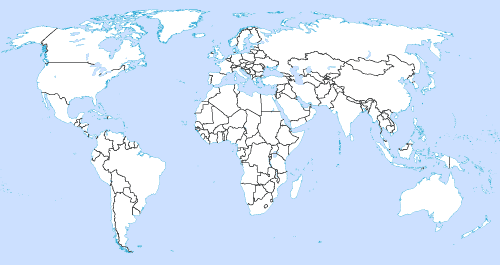 |
| |
|
| |
|
| |
|
|
|
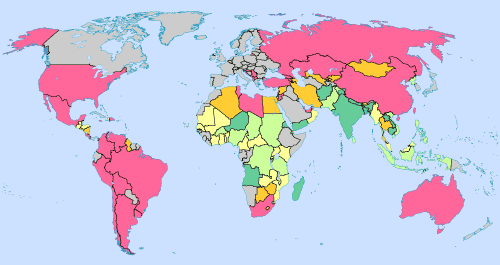 |
|
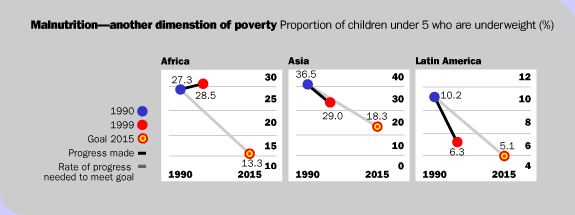
|
|


 Over
the past decade, the proportion of people in extreme poverty declined
more in some regions than in others. In East Asia, especially in
China, poverty rates have declined fast enough to meet the goal
in 2015. Most other regions could achieve the goal, if economic
growth continues and income distributions do not worsen. But Sub-Saharan
Africa lags far behind, and in some countries poverty rates have
worsened.
Over
the past decade, the proportion of people in extreme poverty declined
more in some regions than in others. In East Asia, especially in
China, poverty rates have declined fast enough to meet the goal
in 2015. Most other regions could achieve the goal, if economic
growth continues and income distributions do not worsen. But Sub-Saharan
Africa lags far behind, and in some countries poverty rates have
worsened.